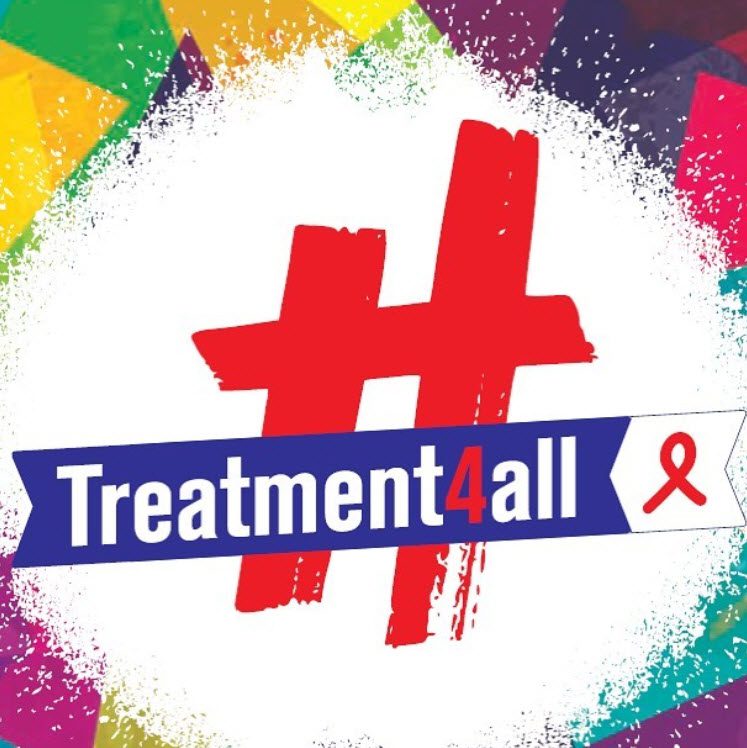by Aynabat Yaylymova*
Central Asia (Kazakhstan, Kyrgyzstan, Tajikistan, Turkmenistan and Uzbekistan) is one of the few regions in the world where the HIV epidemic continues to grow. All countries in the region, except for Turkmenistan, have also officially reported COVID-19 cases. This article highlights the role and commitment of community-based organizations as they navigate the challenges of addressing HIV amidst a global pandemic. The basis for the article is both a desk analysis of existing reports, as well as conversations with several service providers in Kazakhstan and Kyrgyzstan.

In terms of availability and accessibility of HIV services, there are similarities and differences across the region. At one extreme there is Turkmenistan, a country that denies the existence of HIV, does not offer HIV/Aids treatment, harm reduction services, and neglects to report any meaningful data to the international community. Uzbekistan, in a similar state of denial, has discontinued its opioid substitution therapy (IDPC Briefing Paper: Opioid Substitution Therapy in Eurasia: How to increase the access and improve the quality, January 2012) and shares with Turkmenistan the criminalization of homosexuality.
Over the years, Kyrgyzstan led many progressive approaches in the region and, like neighboring Tajikistan, received substantial assistance by international aid agencies. Kazakhstan has taken on the financing of harm reduction activities through its national budget and has liberalized its drug policies (WHO Kazakhstan Country Profile 2005). Yet, across the region, punitive approaches towards drug users and people living with HIV/Aids persist, as do stigma and discrimination (Miles to GO: The Response to HIV in Eastern Europe and Central Asia, Global AIDS Update 2018.) Furthermore, harm reduction programs and treatment services remain low.
Non-governmental organizations (NGOs) are instrumental in reaching people at high risk of contracting HIV, offering testing and services, and educating people about their rights. They also address stigma and discrimination against people with HIV and high-risk communities.
Livelihoods
The COVID-19 pandemic has had a profound adverse impact on the overall economy, as well as the livelihoods and income of population in the region. High risk groups and people living with HIV have been impacted in several ways. Many people living with HIV lost their jobs and salaries. This resulted in food insecurity as many people can no longer afford basic groceries. To make matters worse, inflation is on the rise. Despite the heavy workload and health risks associated to working in the healthcare sector during the pandemic, doctors and other medical professionals have not received a raise, which has resulted in demotivation and an increased desire to find alternative careers.
The COVID-19 pandemic has mobilized civil society in Kazakhstan, Kyrgyzstan and Tajikistan at unprecedented level. This surge of citizen engagement has resulted in the creation of social support groups and services that directly benefit affected populations. During lockdowns there was a surge in shelters for women living with HIV who suffered from domestic violence. Affected populations also received psychological support. The public joined forces with representatives of the private sector to distribute protective equipment and food items to those most in need, including people living with HIV/Aids. They also helped patients register to receive social benefits and fill out all the necessary forms to claim these. Civil society groups also helped migrants in Russia and Turkey receive their medications through the postal service.
In addition to COVID-19, civil society groups fear that the economic and political instability in the region, new NGO restrictions, and the changing legal and administrative mechanisms will further undermine the rights of people with HIV and increase discrimination. This may drive high-risk communities underground, making it harder for civil society to reach people living with HIV and TB.

Internet
During the pandemic and ensuing lockdowns, many services and all communication went virtual. This was both a blessing and a curse. Unreliable and expensive internet connection affected people’s ability to access critical social and medical services. Low computer literacy in the region also meant that some people were entirely cut off from online healthcare services.
On a more positive note, the internet brought medical professionals, patients, and civil society closer together. COVID-19 forced people to make use of online consultations and services, making access to health professionals more widespread and efficient.
Vulnerable Groups
Prison populations had poor access to medical services before COVID-19 and during the pandemic this inequity was accentuated. People who were released from prisons during the global pandemic had an even harder time finding jobs, getting on anti-retroviral (ART) and methadone treatments. Lockdowns caused many of them to lose the little money they had, their housing, and forced them back into shelters. Since it was hard for them to find their next meal, treatment became secondary. Drug users and sex workers were particularly affected by this negative cycle.
In Kyrgyzstan, there were attacks on LGBTQ groups. Political instability and economic crisis fuel sentiments of nationalism. People look for scapegoats, someone to blame. There were raids on sex workers who had already lost their livelihoods because of the pandemic. This led to further marginalization and impoverishment of people living with HIV. Activists in the region, say it is critical to also address the social and medical needs of children living with HIV.
Diagnostics and Treatment
During the global pandemic COVID-19 testing became a priority in labs across the region, which made it more challenging to access HIV diagnostics, monitor treatment, and patient viral load. Some doctors were reassigned to provide COVID-19 testing and services. This reduced access to HIV services. In Kyrgyzstan, HIV testing has dropped by about 25 percent during the pandemic and in 2020 a lot less people tested for HIV. There was quarantine related disruptions. Luckily, people who were already on ART treatment had a six-months supply thanks to a government’ decision. In Kyrgyzstan and Kazakhstan, many NGO outreach workers were granted special permits by city mayors to offer mobile services and treatment to people living with HIV/Aids.
In Kyrgyzstan, the government developed and implemented a national COVID-19 and HIV plan at the start of the pandemic, which helped to pivot amidst a health emergency. This enabled Kyrgyzstan to apply early and receive funding from the Global Fund. HIV activists say that medical professionals and civil society collaborated effectively and came up with distribution plans to provide vital services and drugs to people living with HIV.
Mortality
According to HIV activists in the region, most people who were on ART did not get COVID-19 and if they got it, they were not hospitalized. However, people who were not on treatment were more likely to be infected. That said, it remains difficult to estimate mortality rates of HIV positive patients to COVID-19. Furthermore, people who had HIV and COVID-19 were more likely to have other diseases. They may have died from co-infections, which is why estimating exact data is challenging. The good news is that people with COVID-19 in hot spots are now being tested for HIV, which promotes early detection and timely treatment.
Challenges and Opportunities
While the global pandemic is undeniably tragic, civils society groups in Central Asia are alarmed by the world’s decreased attention to infectious diseases such as Tuberculosis and HIV. International funding to support much-needed services on these diseases remains low. This may backfire if there is a new wave of HIV/TB infections due to stressed health systems in the region. Civil society must continue to pressure governments to attract the financing needed to keep the cost of HIV and TB medicines affordable.
The COVID-19 pandemic has created a lot of uncertainty and disrupted many lives in Central Asia and around the world. Civil society groups working on HIV/Aids in Central Asia have had a hard time planning for the future of their clients during the pandemic. Burnout and exhaustion are at an all-time high and should be prioritized and addressed if we want to manage HIV and other infectious diseases in the future.
Note: The author acknowledges the contributions to this article by Nuraly Amanzolov and Lyubov Vorontsova of the Central Asian Association of People Living with HIV, Sergey Bessonov, Bagtygul Israilova and Aybar Sultangaziyev.
* Aynabat Yaylymova is an HJN Ambassador and the Founder and Editor of Saglyk.org, a website with public health information in the Turkmen language.